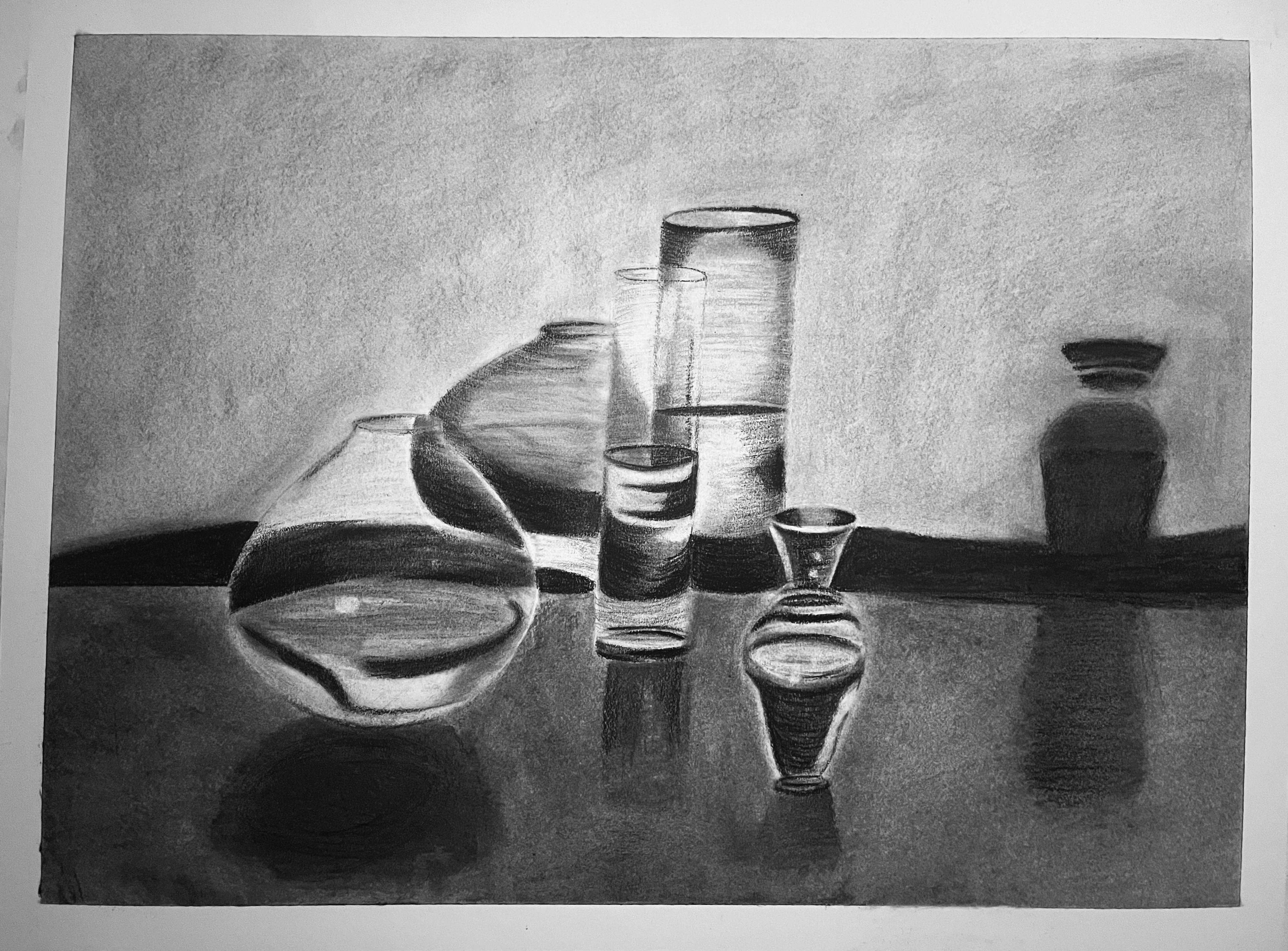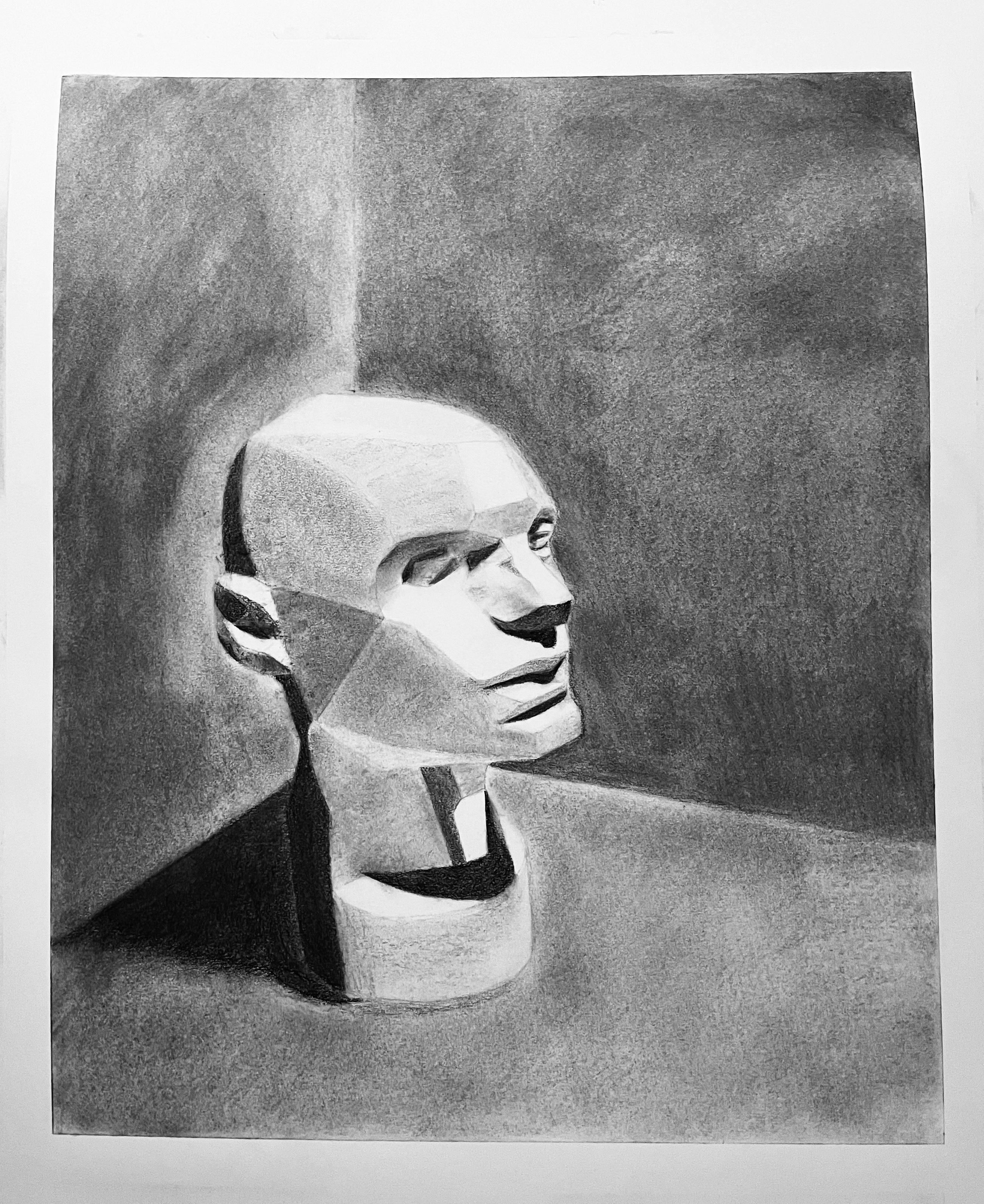
Goal
Paint a small head study (5×7–9×12) with three clear value groups and simple plane changes before features.
Palette & surface
- Titanium white, yellow ochre, cad red light (or venetian), ultramarine, burnt umber.
- Toned panel/canvas (neutral gray or warm earth).
- Solvent-free medium, paper towels, palette knife.
Block-in plan
- Indicate head angle with a simple envelope and centerline.
- Group shadow shapes as one value; avoid detail inside shadow.
- Place features only after planes read in light vs shadow.
Step-by-step
1
Drawing envelope
Place top/bottom, brow/nose/chin proportions. Keep lines straight and adjustable.
2
Shadow map
Thin umber wash: connect all shadow shapes (eye sockets, under nose/lip, jaw). One value.
3
Average lights
Lay a single light family note per plane (forehead, cheek, nose top). Hold highlights.
4
Temperature shifts
Warm lights / cool shadows (or vice-versa). Tiny shifts per plane sell form.
5
Edge hierarchy
Sharpen only at the focus (eyes/nose edge). Soften hairline and far cheek.
6
Accents & highlights
Place darkest dark and small highlights last. Stop before overblending.
Tips
- Value beats color for likeness—squint often.
- Keep shadow family thin; lights thicker/opaque.
- Save detail for last 10%; big shapes do the heavy lifting.
Troubleshooting
- Muddy color: Wipe, remix clean puddles, repaint once.
- Plastic look: Edge variety missing—soften turning edges.
- Dead skin: Over-gray—add small warm/cool bias per plane.
